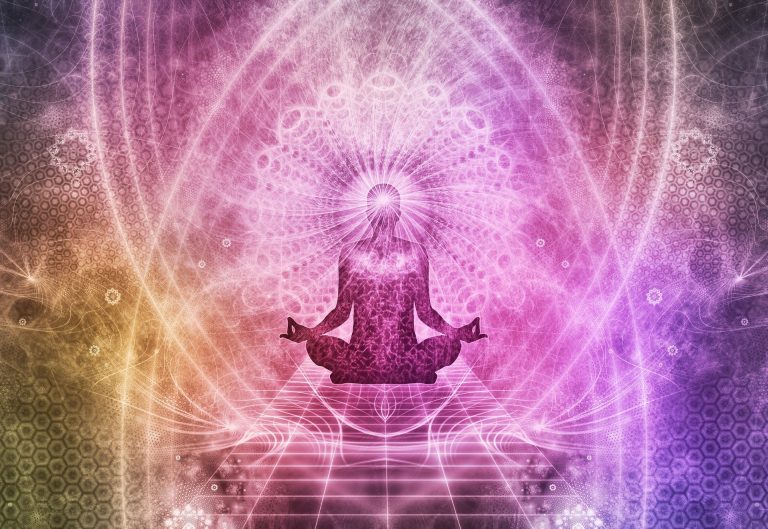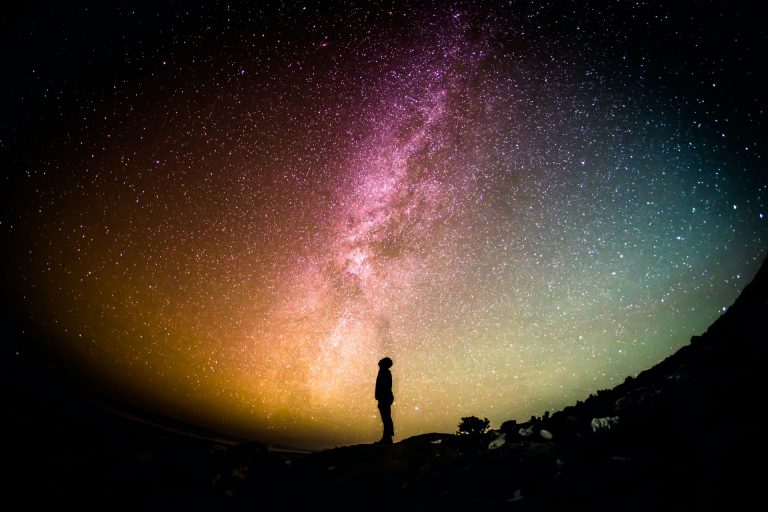Western science likes to divide and separate objects, including the human body, into very compartmentalize parts. Each part with its own purpose; the heart pumps the blood, the lungs exchange the air. But, in Eastern science, the body’s organs have many different functions (some symbolic) and different relationships with other organs. In Eastern medicine, the breath is one of the best tools to diagnose general health, and can also be a key indicator of more specific health. But, the breath goes beyond just being an analytical tool to check health. With knowledge and practice, the breath can be used to control the internal organs and activate the body’s dormant powers.
The body knows how much stomach acid is needed to digest food, which is regulated by our breath. If you try to force yourself to breath faster or slower than your body’s needs, then the body will be over or under saturated with oxygen, which alters our metabolic processes, and the body will try to stop you. A fast breath can be used to saturate the body with oxygen, or a slow breath to subdue an aggravated mind. If we pay attention, by watching the breath we can examine the entire mind, body and soul. With meditation and studying the breath, experimenting with the breath, forcing the body to its limits, knowing the body, knowing the breath and all its effects on the body, millions of undiscovered sensations lay in wait. All of those sensations are chemical reactions flooding the body with super-powerful endocrine juice, the hormones.
There are countless other minor regulatory actions which all work together without our conscious observation. Therefore, the breath is also a way to observe and regulate the body’s immediate state, whether it is calm, excited or anywhere in between. Those are the obvious observations we can witness with every breath, but when our observation is even sharper, the body’s mechanics and reactions can be heightened to reveal the magic which lies within.
The breath is the vehicle which delivers a constant and necessary supply of fuel to our bodies, oxygen. Like any combustion, oxygen is an essential ingredient to sustain our body’s energy cycle, keeping our cells alive. If the body’s cells are deprived of oxygen, then they resort to a secondary method of burning fuel to survive. Instead of burning clean oxygen, the cells metabolize energy by processing more sugars, which leaves lactic acidic residues, which causes inflammation, and restricting blood and Chi.. If left untreated, this inflammation will restrict blood flow to individual cells, leading to further disease.
Another benefit to focusing on the subtleties of the breath is that we can tune into the bodies emotional state, which allows you to observe your conscious and subconscious reactions to life’s daily challenges. Our Sympathetic and Parasympathetic nervous systems are the core communication channels of our emotional body. When we are stressed, tense or uncomfortable the Sympathetic nervous system tells our body to produce a flood of chemicals that activate our body’s excited state. And when we are clam, our Parasympathetic system is regulating all sorts of hormones to make us relaxed and comfortable. The breath is a direct connection to control these nervous systems, and is a big part of the Eastern meditation systems, though they call them by different names.
The breath can be used to observe many things inside the body, which is a more active meditation exercise. But great discernment of observation and imagination must be closely watched or the mind will affect the body more than the breath. Aside from watching the breath to observe the body, by focusing the mind on a single object like the rise and fall of the breath focused on some specific point, the endless stream of ideas flowing through our thoughts is controlled. This pinpoint focus is the foundation of most meditations. The untrained mind is called ‘the monkey mind’ by Eastern traditions because of the endless changing thoughts our minds jump from and to. But with training and control, the mind is sharpened to control this stream of thoughts, and focus on the finest details in life.
The breath has been the traditional tried and true method for meditation for billions of people throughout the histories of many cultures. Buddhism calls this focusing on the breath, Vipassana. After we are born, the breath is the first sign of life, and sustains us more than food, water or anything else. The breath is a direct and instant indicator of your state of mind and general health. Most importantly, it is the regulator of our body’s metabolic processes for most all the body’s systems. There are 1,000’s of observations, in the body, to be aware of during every breath. That observation can be directed and used to control the body. Your observation can affect the body to heal itself, which sciences has studied extensively. If you can understand how everything works together then you can hack the body into miracle mode. By sitting in meditation, studying the breath, we can study how the body works and reverse engineer what we understand and observe.
If practiced, taking meditation into every breath at every moment in your life, you will train yourself to be in a state of high awareness. By watching the breath go in and out, as you watch your body’s internal actions, or during any task in daily living, the consciousness is trained to multi-tasks in all circumstances. And, with the constant practice of multi-observation, then our sensory capability is increased. At the same time this awareness allows you to observe more subtle details of life around you in situations or with people. The senses are elevated, appreciation for life’s miracles is recognized, and a general state of appreciation and bliss can be found. Observing what is happening inside you and the ways of the world, life becomes more controllable.
It is with the breath that the body’s energy systems can be experienced and harnessed, for our soul’s higher purpose. The human body is a storehouse of the most powerful chemicals known in the Universe, and they are meant to be understood and utilized. On top of our body’s chemistry, the Universal energies are constantly flowing throughout each of us, and it is only through meditation that we can harness the two together.
In martial arts, when a strike is delivered, there is often a yell or other effort to exhale with the strike. Most everyone naturally uses that exhale to help with any exerted effort. At the other end of our body’s efforts, when we relax to try to let off some stress, we also exhale, feeling the tension release away with the breath. On the inhale, we take in the air, fueling our body for the next expenditure of effort. The breath can be used to elevate our body’s abilities, and it is through meditation, that we can learn how to utilize our bodies better.
The breath cycles in and out but stops for a brief moment at the ends of each half, and each of those halves have a series of starting, progressing and ending. But, each of those series can be further broken down into sorter moments of time, and each of those have a starting and stopping point. The lungs and joints expand and contract. The heart follows the breath and capturing as much oxygen as it needs. With thousands of events happening at the finest scale of time, meditation brings our awareness to a heighten state, eventually being able to view Life in its thousands of events happening at every moment. It is a heightened sense, in movies similar to dodging bullets in slow motion.
In meditation, there are a few standard practices of how to breathe, called the Bellows or Buddhist’s Breath. The first thing to be mindful of is to sit up straight as if you were being pulled straight up in the air by a string connected to the top of your head. The spine is always gently stretching towards the sky above. With the body still and the spine comfortably stretched straight, the fluids of the body can pass thru the vessels and into the organs without restriction.
The second thing to mention is that the lungs are moved by the stomach. The focus is not on expanding /deflating the lungs, but more of the air being pushed and pulled by the stomach, through the nose, esophagus and lungs, then into and out of the stomach. The stomach is use because it controls the diaphragm.
On the inhale, the stomach (and every cell in the body) is expanded, drawing the air in like an old fire bellows. On the exhale, the natural breath is released with a sense of relaxing every cell. The entire stomach is drawn in as the air is compressed out, from the bottom up.
The cycle is contradictory as in to out, expanding to contracting, and on. The body should breath without any conscious effort once a comfortable and correct pose is reached. The observations should be unaffected the mechanics of the body. But with conscious intention of observing different locations within the body, we can understand even or individual nervous and endocrine systems. Being able to literally feel our emotions coursing through our bodies.
Once the consciousness finds bliss, a chemical reaction is induced, and the synergetic cascade of hormones releases the Kundalini serpent from its dormancy, releasing our spirit from the body.



An impressive share! I have just forwarded this onto a friend who has been conducting a little homework on this.
And he in fact ordered me dinner due to the fact
that I stumbled upon it for him… lol. So let me reword this….
Thanks for the meal!! But yeah, thanx for spending some time to discuss this subject here on your web site.
Look at my blog – خرید بک لینک
You’re so cool! I do not suppose I’ve truly read anything
like that before. So great to discover somebody with a few original thoughts on this subject.
Seriously.. many thanks for starting this up. This site is one thing that is required on the web,
someone with some originality!
Thanks for ones marvelous posting! I actually enjoyed reading it, you are a great author.
I will remember to bookmark your blog and definitely will come back in the foreseeable future.
I want to encourage one to continue your great work, have a nice day!